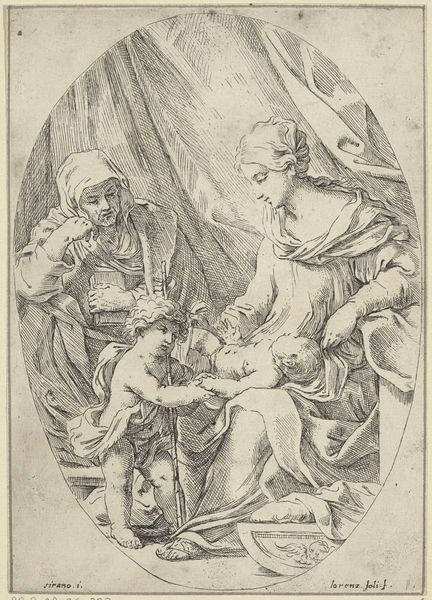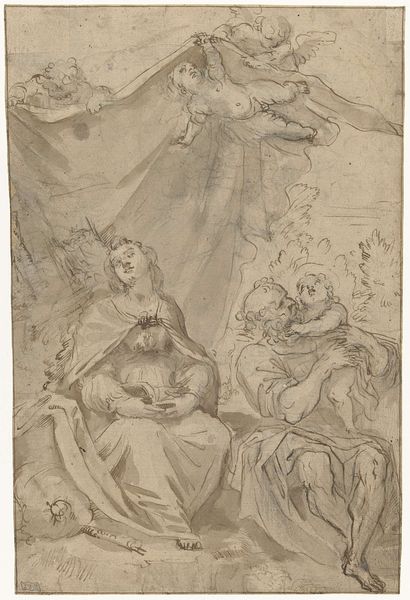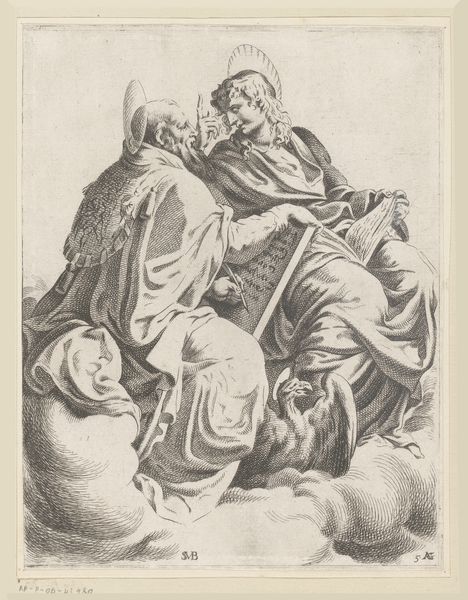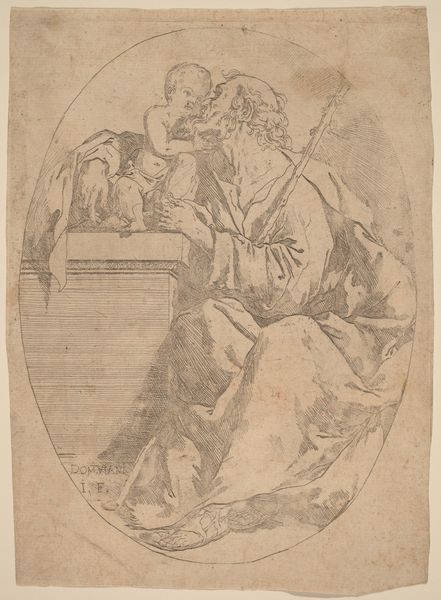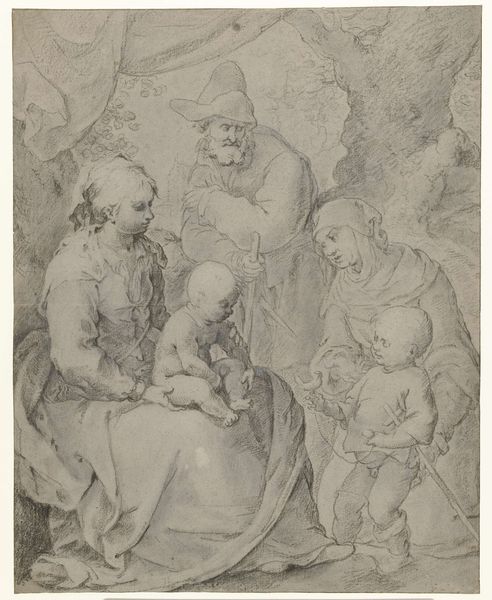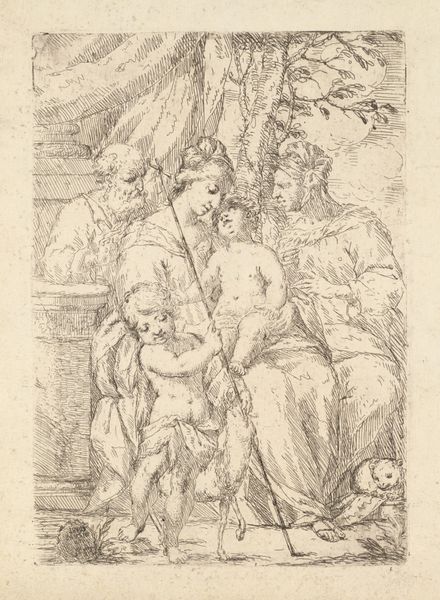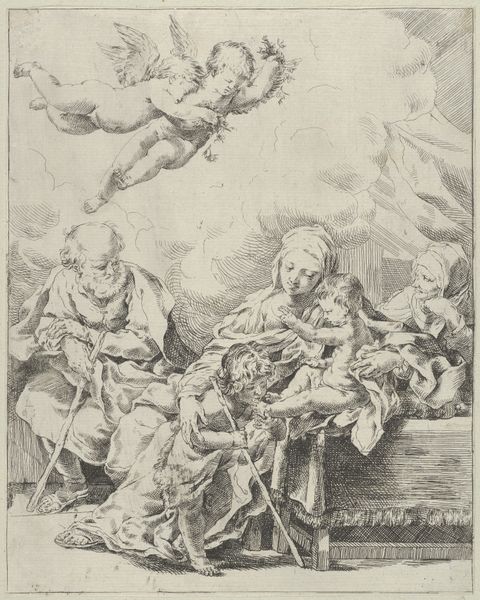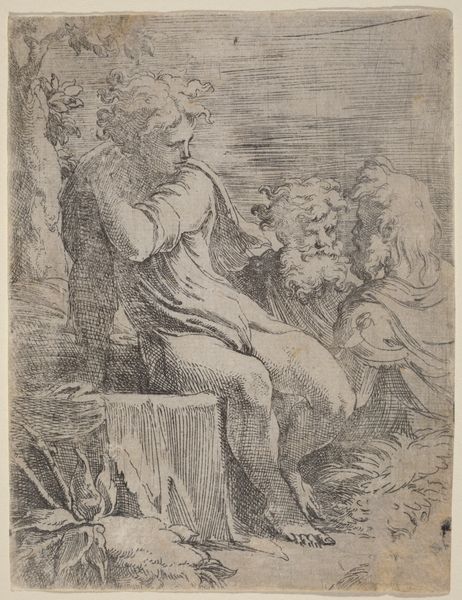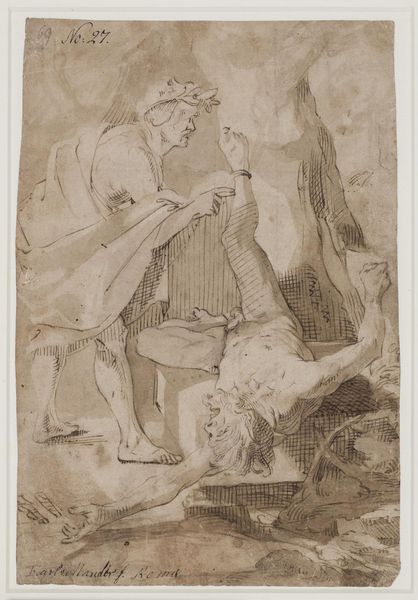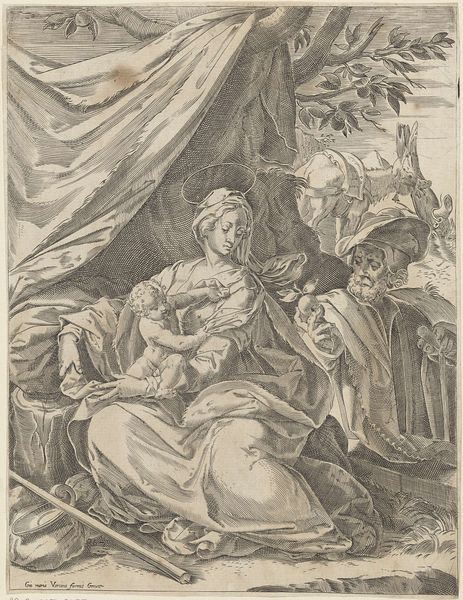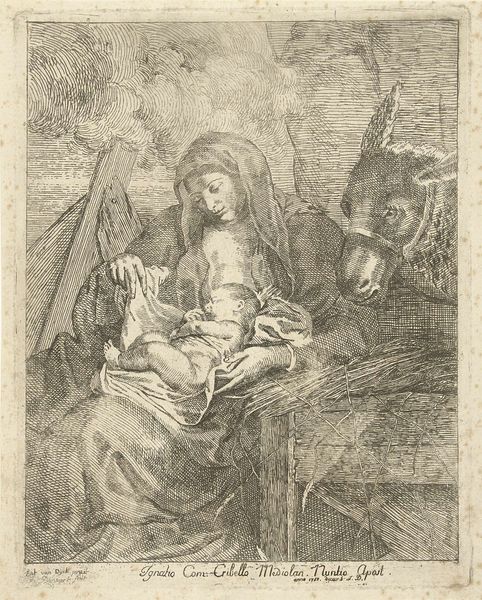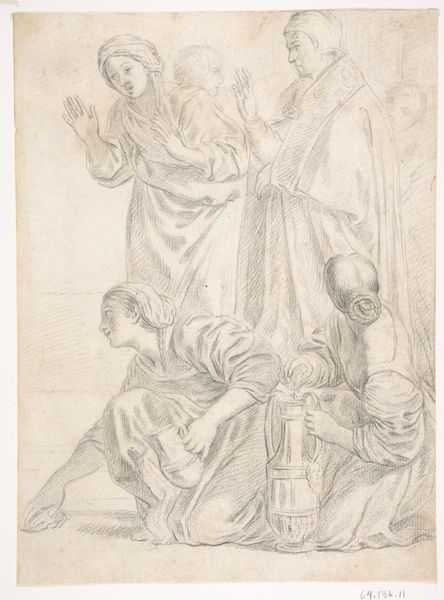
Maria met het Christuskind, de jonge Johannes de Doper en Elisabet 1622 - 1691
0:00
0:00
anonymous
Rijksmuseum
print, engraving
#
baroque
# print
#
figuration
#
history-painting
#
engraving
Dimensions: height 204 mm, width 158 mm
Copyright: Rijks Museum: Open Domain
Editor: This is an engraving from somewhere between 1622 and 1691, entitled "Maria met het Christuskind, de jonge Johannes de Doper en Elisabet," or "Mary with the Christ Child, the young John the Baptist, and Elizabeth," currently housed at the Rijksmuseum. It's quite moving; I am curious to understand what exactly is at play. How do you interpret this work, seeing as it presents women in a somewhat intimate setting, yet embedded in such strong religious context? Curator: I see it as a visual embodiment of the societal pressures placed upon women during this period, particularly concerning motherhood and religious piety. We see Mary, not just as a mother, but as a conduit of divinity, juxtaposed with Elizabeth. Editor: So you're saying there's a deliberate framing of these women within these very specific, almost pre-determined roles? Curator: Precisely. And look at how their interactions are depicted. There's a sense of imposed reverence, almost a performative piety. How much agency do you think they possess in this depiction? Consider how art like this reinforced patriarchal structures by presenting idealized, yet restrictive, versions of womanhood. Editor: I guess it highlights how even within seemingly tender, familial scenes, there’s this undercurrent of prescribed behavior, which echoes how the Church dictated their roles. Is the gaze of the elder women key to reading their own, maybe, repressed desire? Curator: The positioning of Elizabeth in the background seems more concerned than joyful, as though there is worry about fulfilling her ordained purpose in the eyes of the church, the viewer, and even herself. The depiction of both women might tell us much about anxieties and lived realities that are so often overlooked in standard interpretations. The dogma overshadows identity and female agency. Editor: So, this isn’t just a depiction of a biblical scene but a social commentary? It highlights the tensions between faith, gender roles, and individual experiences within that framework. Thank you! Curator: Precisely, understanding those tensions adds a profound layer to the narrative.
Comments
No comments
Be the first to comment and join the conversation on the ultimate creative platform.
